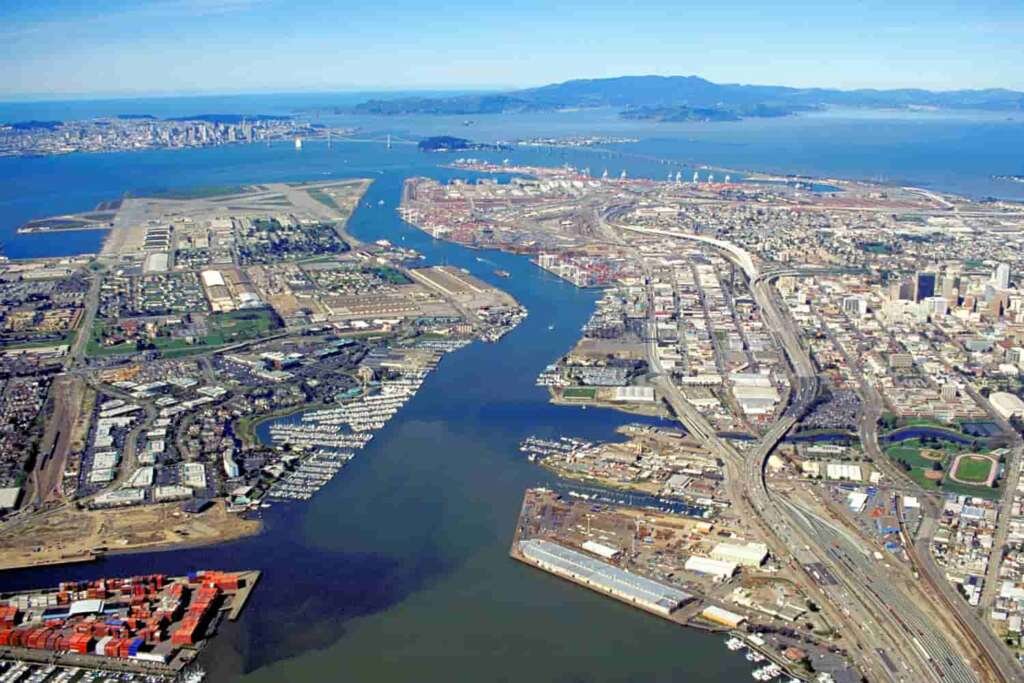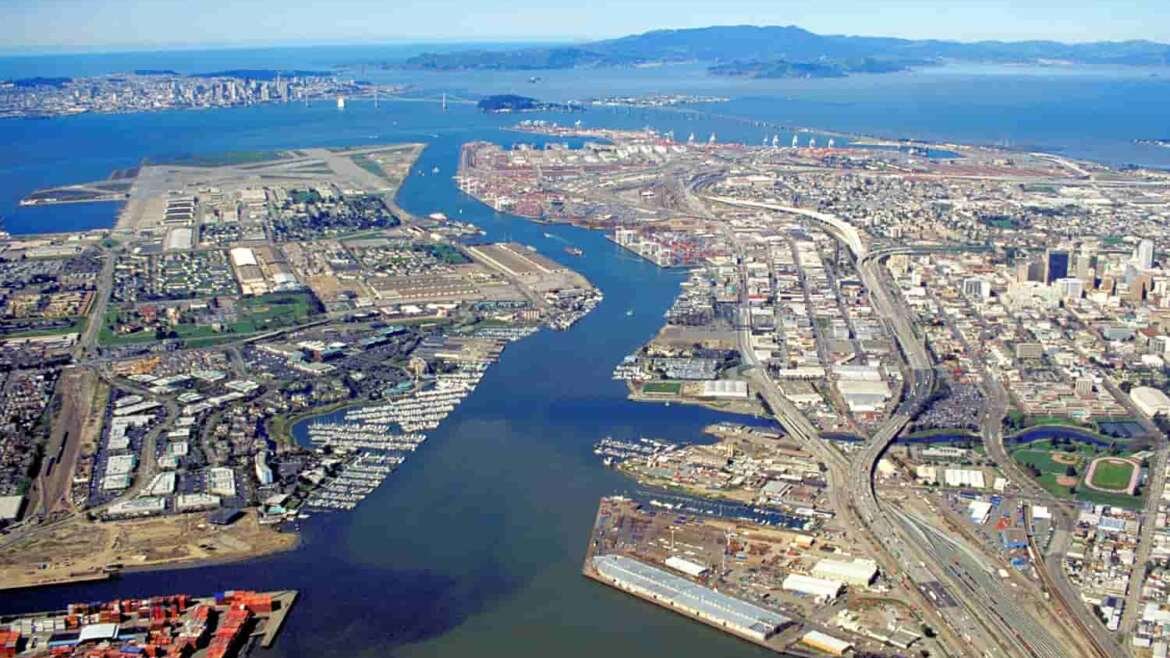The Port of Oakland serves as Northern California’s primary seaport and a critical link in the global supply chain. While it is a key entry point for goods imported from China and other Asian markets, it holds a unique and powerful position as a premier export gateway, especially for American agricultural products. Its strategic location, combined with significant infrastructure investments, makes it an essential partner for businesses engaged in trans-pacific trade. For global traders, particularly those in the agricultural sector, the Port of Oakland offers unparalleled expertise and facilities for getting products to and from international markets. This article delves into the port’s cargo performance, its role as a leading export hub, and its future-ready infrastructure.

Northern California’s Vital Link to Global Markets
The Port of Oakland is a primary seaport for Northern California and a critical link in the global supply chain. While it is a key entry point for goods imported from China and other Asian markets, it holds a unique and powerful position as a premier export gateway, especially for American agricultural products. Its strategic location, combined with significant infrastructure investments, makes it an essential partner for businesses engaged in trans-pacific trade.
For global traders, particularly those in the agricultural sector, the Port of Oakland offers unparalleled expertise and facilities for getting products to and from international markets.
Cargo Performance and Key Data
After navigating the challenges of the global market, the Port of Oakland demonstrated strong growth in 2024, indicating a robust recovery and increasing demand.
| Metric | 2023 | 2024 |
|---|---|---|
| Total Annual TEUs Handled | 2,065,709 TEUs | 2,260,000 TEUs |
| Full-Year Import Growth (2024) | – | +15% |
| Full-Year Export Growth (2024) | – | +5.4% |
Source: Port of Oakland Official Website, Port Technology International
The Premier Hub for U.S. Agricultural Exports
The Port of Oakland is the undisputed leader in agricultural exports on the West Coast. For seven consecutive years, it has been the #1 ranked U.S. port for international reefer (refrigerated) export TEUs. This demonstrates exceptional Expertise and Authority in handling sensitive, temperature-controlled goods.
- Key Exports: Edible fruits and nuts, frozen proteins, and dairy products.
- Economic Impact: In 2023, the commercial value of reefer exports alone through Oakland reached $7 billion.
- Importance for China Trade: The port is a vital exit point for American goods destined for the growing consumer markets in Asia.
Future-Ready: The Turning Basin Widening Project
To maintain its competitive edge and accommodate the next generation of ultra-large container vessels, the Port of Oakland is advancing its Turning Basins Widening Project. This crucial infrastructure upgrade will deepen and widen the port’s channels, allowing bigger ships to maneuver more safely and efficiently. This forward-looking investment ensures that the Port of Oakland will continue to offer efficient and cost-effective shipping options for years to come.
Shipping Costs from China to Port of Oakland
Understanding the shipping costs from China to the Port of Oakland is crucial for businesses utilizing this strategic West Coast gateway. These costs are dynamic and influenced by various factors, including the type and volume of cargo, the chosen shipping method (Sea Freight or Air Freight), current market conditions, fuel prices, and specific surcharges.
Factors Influencing Shipping Costs
Several key elements contribute to the overall cost of Shipping from China to USA via the Port of Oakland:
- Incoterms: The agreed-upon International Commercial Terms (Incoterms) define who is responsible for costs and risks at various stages of the journey. This significantly impacts the final price. For example, FOB (Free On Board) places more responsibility on the buyer, while DDP (Delivered Duty Paid) means the seller covers almost all costs up to the destination, often associated with Door to Door Shipping.
- Cargo Type and Volume: The nature of your goods (e.g., general cargo, hazardous materials, oversized cargo like OOG Freight or Breakbulk Freight) and their volume (measured in TEUs for containers or cubic meters for LCL shipments) directly affect freight rates.
- Fuel Surcharges (BAF/FAF): Bunker Adjustment Factor (BAF) or Fuel Adjustment Factor (FAF) are surcharges added by carriers to account for fluctuations in fuel prices.
- Peak Season Surcharges (PSS): During high-demand periods, especially before major holidays like Chinese New Year or the year-end shopping season, carriers may impose PSS.
- Port Charges: These include terminal handling charges (THC), demurrage, and detention fees at both the origin and destination ports.
- Customs Duties and Taxes: Importers are responsible for paying applicable duties and taxes upon customs clearance in the U.S.
- Ancillary Services: Costs for warehouse storage, insurance, inland transportation (Road Freight), and specialized handling will add to the total.
Estimated Shipping Costs from Major Chinese Ports to Oakland
The following table provides estimated sea freight costs for both Full Container Load (FCL) and Less than Container Load (LCL) shipments from key Chinese ports to the Port of Oakland. Please note that these figures are estimates and can vary significantly based on real-time market conditions, carrier availability, and specific service requirements. For precise and up-to-date quotes, it is always recommended to contact Dantful International Logistics.
| Origin Port (China) | Estimated FCL Cost (20ft Container) | Estimated FCL Cost (40ft Container) | Estimated LCL Cost (per CBM) |
|---|---|---|---|
| Shanghai | $2,100 – $3,600 | $3,100 – $5,100 | $75 – $115 |
| Ningbo | $2,000 – $3,500 | $3,000 – $5,000 | $72 – $112 |
| Shenzhen | $2,200 – $3,700 | $3,200 – $5,200 | $80 – $120 |
| Guangzhou | $2,150 – $3,650 | $3,150 – $5,150 | $78 – $118 |
| Qingdao | $1,900 – $3,400 | $2,900 – $4,900 | $68 – $108 |
| Tianjin | $1,800 – $3,300 | $2,800 – $4,800 | $65 – $105 |
| Xiamen | $2,050 – $3,550 | $3,050 – $5,050 | $75 – $115 |
Note: These are general estimates for port-to-port sea freight and do not include customs duties, taxes, insurance, or inland transportation costs. Prices are subject to change based on market volatility and specific service requirements.
Transit Times from China to Port of Oakland
Predictable transit times are vital for efficient inventory management and supply chain reliability. The journey from China to the Port of Oakland involves various stages, and understanding the typical durations for different shipping methods is key to successful logistics planning.
Factors Affecting Transit Times
Several factors can influence how long your cargo takes to reach Oakland from China:
- Shipping Method: Sea Freight is generally the most economical but slowest, while Air Freight offers significantly faster delivery at a higher cost.
- Direct vs. Transshipment: Direct routes are faster. Transshipment (where cargo is transferred between vessels at an intermediate port) adds time due to layovers and additional handling.
- Vessel Speed and Route: Different shipping lines operate vessels with varying speeds and follow different routes, impacting overall transit time.
- Port Congestion: High volumes of cargo or unforeseen events can lead to delays at origin or destination ports.
- Weather Conditions: Adverse weather can cause delays at sea or in port operations.
- Customs Clearance: Efficient customs clearance processes are crucial. Delays here can significantly impact overall transit time.
Estimated Transit Times from Major Chinese Ports to Oakland
The following table provides estimated transit times for both sea freight and air freight from major Chinese ports to the Port of Oakland. These are general guidelines, and actual times may vary.
| Origin Port (China) | Estimated Sea Freight Transit Time | Estimated Air Freight Transit Time |
|---|---|---|
| Shanghai | 16 – 26 days | 3 – 6 days |
| Ningbo | 16 – 26 days | 3 – 6 days |
| Shenzhen | 14 – 24 days | 2 – 5 days |
| Guangzhou | 14 – 24 days | 2 – 5 days |
| Qingdao | 18 – 28 days | 4 – 7 days |
| Tianjin | 19 – 29 days | 4 – 7 days |
| Xiamen | 15 – 25 days | 3 – 6 days |
Note: Sea freight times are port-to-port estimates. Air freight times typically include airport-to-airport transit. Both exclude potential delays from customs clearance or unforeseen circumstances.
Dantful: Your Expert Partner for the Port of Oakland
Whether you are importing goods when Shipping from China to USA or exporting high-value agricultural products to Asia, navigating the Port of Oakland requires a knowledgeable Freight Forwarder. Dantful International Logistics specializes in the unique requirements of this port.
Our expertise in handling reefer containers and managing the complexities of both import and export documentation ensures your cargo moves smoothly. We provide a highly professional, cost-effective, and high-quality one-stop service, making Dantful your ideal partner for trade through the Port of Oakland.
Contact Dantful International Logistics today to optimize your agricultural export strategy or streamline your next import shipment.


